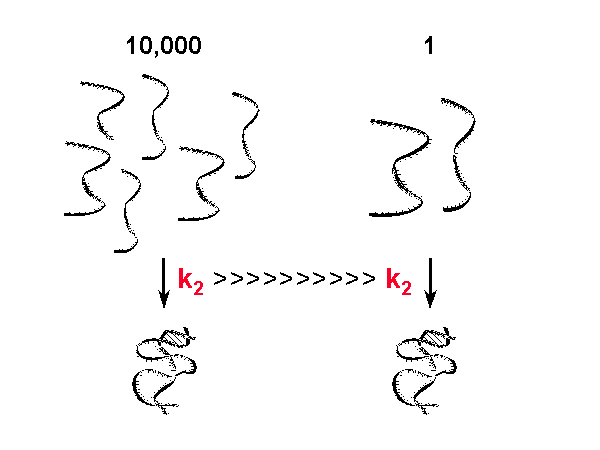These 3 slides were copied from a larger slide set at http://www3.kumc.edu/jcalvet/bioc801b/index.htm
, They are owned by Pr. James P. Calvet at the Department of Biochemistry
and Molecular Biology in the University of Kansas Medical Center.
They are a nice set of slides that you could visit as well, but for our
purposes, these three slides suffice.
This illustrates the
concept of how sequence complexity affects the rate of DNA reassociation.
Imagine two different DNA sequences in a genome, one present one time per
haploid genome (right) and the other present 10,000 times per haploid genome
(left). They would be present at a 1:10,000 ratio with respect to
each other. If these sequences were mixed together (which is what
would happen if total genomic DNA was isolated for analysis), then denatured
and allowed to reassociate, the repeated sequences would reassociate much
more rapidly because it would be much easier for them to find complementary
strands to base pair with. The repeated sequences would reassociate
with a very low Cot1/2
and therefore with a very high k2,
consistent with a rapid rate of reassociation.
please close this window

